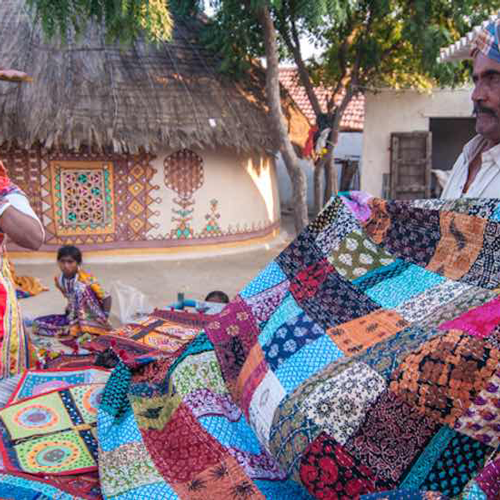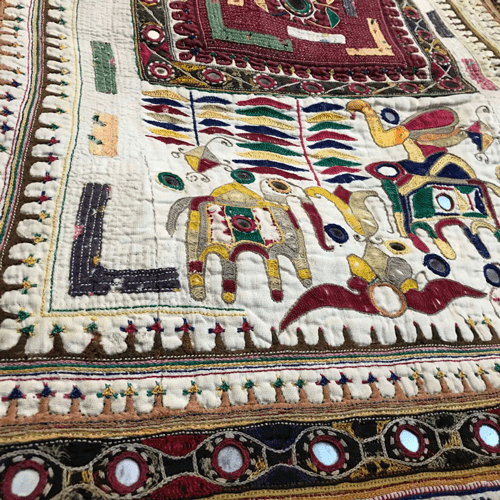THE CRAFTS
OF KUTCH
Kutch’s craft industry is composed of over twenty one craft livelihoods. Craft is a living creative industry made from the hands of skilled artisans and generations-old tradition.
About Kutch
Kutch is known for the colorful silken threads that decorate traditional Kanchlies and Kanjaries worn by Kutchie women. Embroidery is the most visible and recognized craft in Kutch. More than 40 styles of embroideries color the region, representing Kutch’s diverse cultures, communities, and landscapes. Color and craftsmanship are not limited to Kutch embroideries. There are over 20 other textile and non-textile craft sectors which constitute artisans’ primary source of income.
For generations, Kutch has been home to nomadic communities whose traditional work of animal husbandry and craft have lent to each other forming a rich economic and cultural tapestry. Today, Kutch is a confluence of various art, craft, and music forms. Migration brought the distinctive elements of craft traditions from Sindh and Northern India to Kutch. These elements, inherited skill, and community identity are deeply imbedded in the region’s craft culture. Until three decades ago, each craft’s production process, from the sourcing of raw materials to the sale of finished products was practiced within the artisans’ communities.


While craft constitutes the second largest sector of the Indian economy (second only to agriculture), in Kutch, craft and agriculture are parallel economies. Unfortunately, many natural disasters have denigrated Kutch livelihoods. The steady erosion of the region’s primary productive assets (land and cattle) has resulted in an increasing dependence on craft as livelihood. This dependence coupled with limited access to raw materials and markets has resulted in the vulnerability of Kutch artisans and their craft traditions.
In 2001, a massive earthquake shook the region, resulting in a significant loss of life and widespread destruction. The earthquake’s impact on craft livelihoods was devastating. Those most affected were artisans who lost their asset base – work sheds, tools, equipment, and local markets. Quake related losses and shifts in markets and culture challenged the future of Kutch craft. The inherent strength of the Kutchie spirit focused local energy on collaboration and efforts to rebuild. Craft remains the primary source of income for artisan families. The traditions which have colored the region for centuries continue. Each craft sector faces new challenges and opportunities, which must be addressed for the future of Kutch craft and the livelihoods of 60,000 artisans.


